Review: The Callisto Protocol [Xbox One]
Is Glen Schofield's return to sci-fi horror the evolution to the genre fans hoped for?
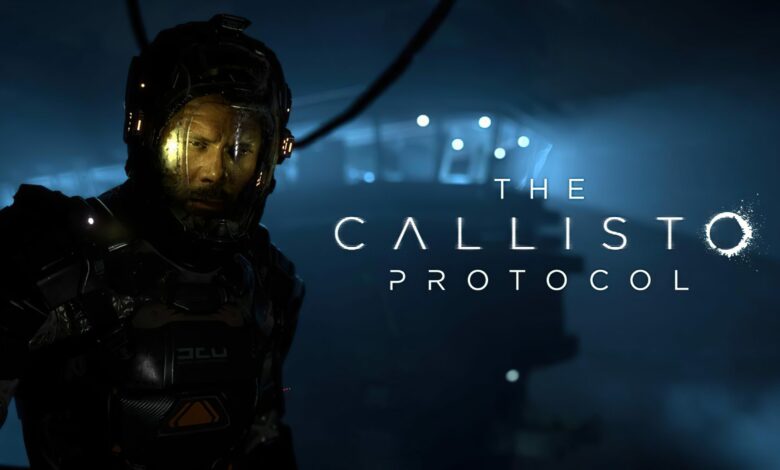
If you’re a survival horror gamer, the name Glen Schofield likely holds great significance to you. Along with his team at Visceral Games, Schofield revolutionized the genre with the sci-fi horror classic Dead Space. Following the mixed receptions of Dead Space 3, however, the series ultimately came to an abrupt and disappointing end. For that reason, the reveal that Schofield would take another stab at a sci-fi horror game with The Callisto Protocol was immediate cause for celebration among fans.
Offering up next-gen visuals and a brand-new story distinct from Schofield’s previous sci-fi horror franchise, The Callisto Protocol looked to be a promising next step for the genre. Developed by Striking Distance Studios, a team featuring many former Dead Space developers, and published by PUBG‘s Krafton, the team behind this new game also appeared to be a hopeful sign.
However, following The Callisto Protocol’s December 2nd launch, initial reviews told a different tale all together. Although some of you may remember my extremely positive takeaways following my first two hours of gameplay, how does my opinion stand after completing the entire game? Is The Callisto Protocol really the next evolution for survival horror or does it fall to the wayside as a forgettable and mediocre title?
Find out as we crash land into The Callisto Protocol!
Escape from Black Iron
In The Callisto Protocol, you play as space trucker turned prison inmate Jacob Lee. After terrorist group The Outer Way attacks Lee’s ship during a routine supply run to Jupiter’s moon Callisto, Lee finds himself the newest inmate of the dead moon’s infamous Black Iron Prison. From there, it isn’t long until Lee awakens in his cell to find the whole prison in chaos as horrific mutating creatures attack and infect everyone in the facility.
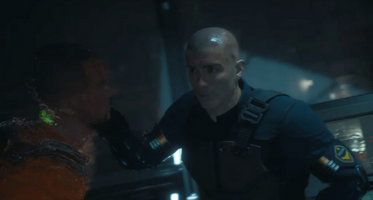
Initially, the game’s story takes the simple premise of survival, as Lee and his new ally Elias work to find a way out of the prison to escape the mayhem. However, things turn complicated as the two run into The Outer Way’s Dani Nakamura. Though it’s established that Elias and Nakamura have a history and friendship, Lee finds himself at odds with her. For one, Lee blames her for putting him into this mess in the first place by attacking his ship. Whereas Nakamura doesn’t trust Lee for her own mysterious reasons.
Another character we meet early on is Captain Ferris. Right from the beginning, Lee’s arresting officer has it out for our protagonist. And while he seems to be stopped early on, Ferris returns.
Establishing a chilling atmosphere
If there’s one thing The Callisto Protocol excels at, it’s the game’s impressive visuals and audio. From the dim rooms illuminated by a flashing strobe light to the wet squishy sounds of the enemies, the game expertly creates a chilling atmosphere. In addition, the game offers photorealistic graphics that blows away most other contemporary titles, even on Xbox One.
However, what really distinguishes The Callisto Protocol from other games in terms of aesthetics is its keen attention to detail. From Lee storing his pistol in the back of his pants to enemy blood spattering on you as you fight, the game emphasizes realism even within its otherworldly premise. Even the way Lee walks immerses you with natural movement that feels fluid rather than stiff.
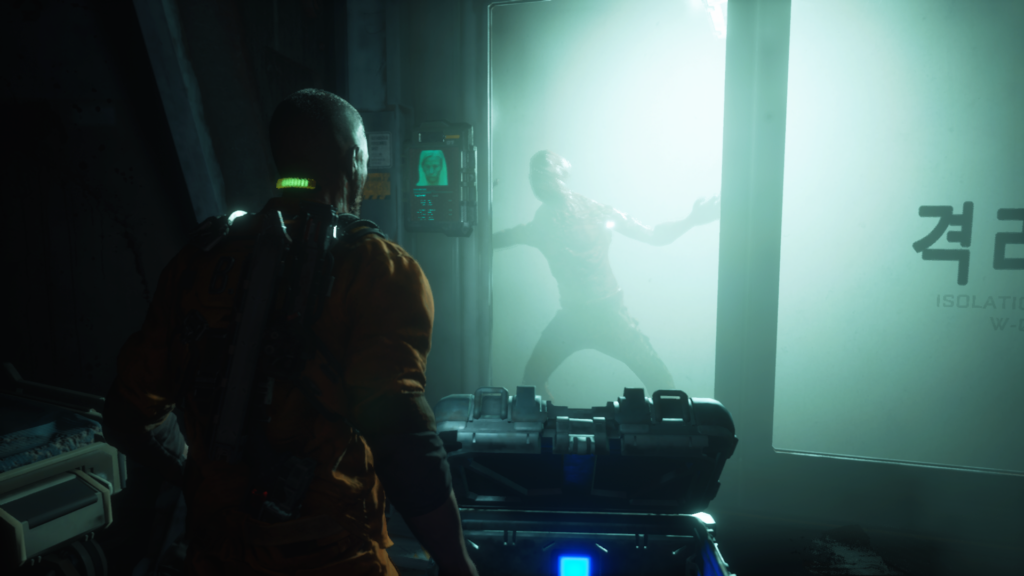
Though, to discuss the game’s visuals without diving into the gore would be criminal. It’s clear that the team at Striking Distance Studios put a lot of time into making all the violence feel brutally real. Everything from dismembering enemy limbs to the way blood splatters from hits and shots makes the game’s violence feel raw and untamed. Additionally, the game offers a lot of shocking death animations for Lee that range from having your eyes gouged out to getting your whole body ripped in half.
Hit ’em where it hurts
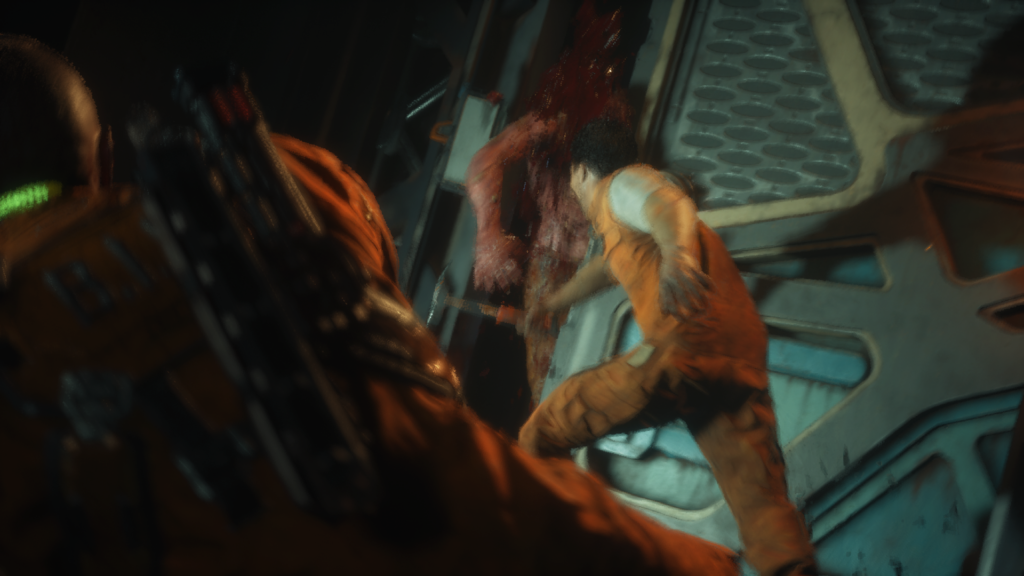
Initially, when I first started playing The Callisto Protocol, one of my favorite things about the game was its focus on close-quarters melee combat. While this may already alienate players who were simply hoping for an unofficial Dead Space 4, I found the differentiating factor fresh and refreshing. Holding left and right on the left stick to dodge before bashing an enemy with a baton felt satisfying, as each weighty blow immersed me deeper into the action.
What other reviewers call sluggish and slow, I say makes combat feel more brutal. The game is in your face at all times, but you’re in its face all the same. The clinging of metal as a Biophage creature flies back with a smack to the head packs a real punch. Another way to say that is that you feel your hits land.
The unforgiving horde
However, as smooth as the melee combat feels in the early parts of the game, cracks begin to show in the later half. One of my biggest critiques from Dead Space was its overuse of swarming dozens of enemies at you as a cheap method to create tension. Therefore, imagine my disappointment when I progressed further into The Callisto Protocol only to find out that this game does the same thing—only worse.
The thing about Dead Space is that its combat primarily centers around gunplay. So, I never truly found myself on that short of supply for ammo to eventually make it out of crowded rooms. However, The Callisto Protocol is a different story all together.

Yes, you get a variety of guns in the game, ranging from a pistol to shotguns to an assault rifle. Yes, you also have telekinesis in the form of the GRP as well. But the core combat still centers around melee. So often throughout my playthrough I was forced to get up close and personal to hordes of Biophage with little to no ammo in my guns.
The problem with this is that melee combat really only feels smooth when you’re facing off against, at max, two guys. When you have five enemies surrounding you on every corner, your dodge will become unresponsive and you’ll overall just feel stuck. Running rarely works either as you’ll often get locked in a room until every enemy is dead. So, you have to fight them.
An evolving nightmare
Another staple gameplay feature in The Callisto Protocol is the ability for enemies to mutate and evolve. From time to time, tentacles will sprout from the chests of Biophage creatures. When this happens, you need to quickly shoot the tentacles or face the consequences of an even stronger enemy.
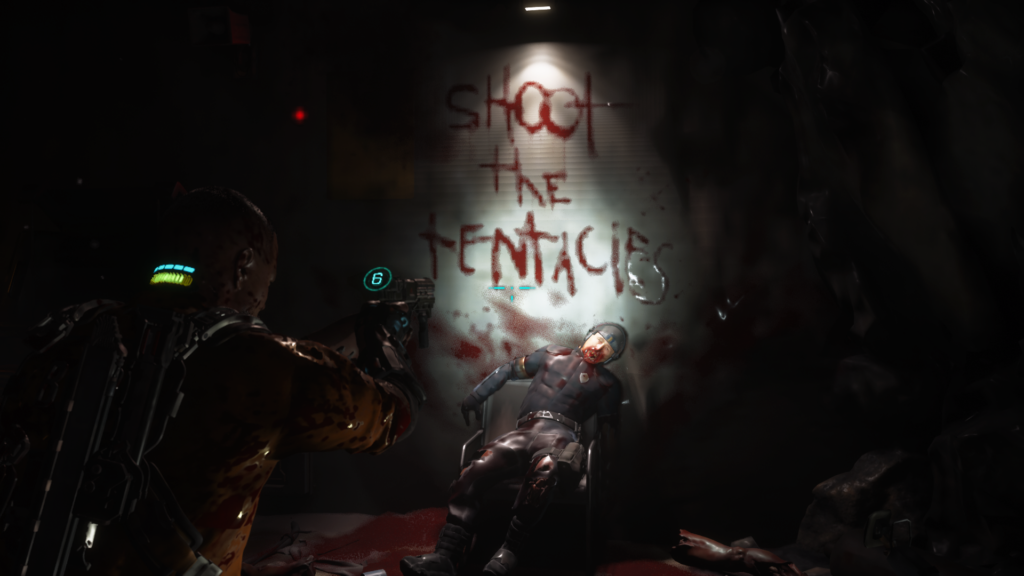
Once again, this isn’t too bad at the beginning of the game, but as things progress, you can get overwhelmed very quickly. As I previously stated, ammo for your guns is sparse, so you’ll likely run into many situations where shooting the tentacles won’t even be an option. In addition, with swarms of enemies, quickly dispatching the Biophage before they mutate becomes a monumental hurdle, and you’ll likely have to face several evolved monsters at a time.
At the risk of sounding redundant, this unbalanced gameplay ultimately leads to a frustrating experience where you will die countless times in many rooms. You know those cool death animations for Jacob I talked about earlier? Trust me, about halfway through the game, you’ll start to get sick of them.
Sneaking into a surprisingly fun section
As much as the latter parts of The Callisto Protocol are riddled with balancing issues that hurt the game, there is one late-game section I thoroughly enjoyed. At one point in the game, you’ll find yourself underground in the buried colony that sits abandoned below Black Iron. There, you’ll meet a brand new enemy type, not too far off from the clickers in The Last of Us.

Where most of the game takes a fast-paced approach to combat, this section slows things down with some highly tense stealth. With the enemies completely blind, they can only utilize their hearing to find you. Therefore, the best way to play this chapter is to crouch and sneak behind the monsters to perform stealth takedowns.
I love when survival horror games make you think through your approach to taking down enemies. And sure, the rest of the game encourages you to strategically choose when to melee, when to shoot and when to throw Biophage creatures into environmental hazards. However, this only works in theory and completely falls flat in execution.
Yet, this stealth section does require you to plan how you’ll make it through a room by picking enemies off one by one. Sometimes you need to be patient and wait for the right moment to sneak behind an isolated enemy. Whereas other times you’ll find yourself using the GRP to hurdle explosive canisters that not only blast away the Biophage you hit, but also attracts all the other creatures around it to give you a window to move.
Spending your hard-earned Callisto Credits
Another feature that forces you to think is this game’s version of a skill-tree. Located throughout different sections of the game, you’ll find several 3D printers that will allow you to purchase ammo, weapons and upgrades. To purchase new prints, you’ll have to find and spend the in-game currency called Callisto Credits.

However, one thing you’ll also notice is that often times, the prices of these upgrades are generally pricy. Additionally, while you can make extra money by selling valuables like energy converters, even these are in short supply and won’t net you enough cash to purchase every upgrade. Therefore, you’ll need to take your time and think through what prints will benefit you the most.
Meet Two Head
Although you’ll certainly face some challenges with the game’s normal enemies, nothing will make you want to pull your hair out quite like the boss fights in The Callisto Protocol. Without any sugarcoating, this game simply has some of the worst boss battles I ever experienced in a video game.
The first time you’ll face off against a boss happens on the moving platform you ride on to meet up with Nakamura following the game’s amazing stealth section. Initially, this segment starts by bombarding you with normal enemies. However, once you clear them out, you’ll get your first encounter with the infamous Two Head.

Now, admittedly, I don’t mind this first battle. I thought the design of the monster was really cool. In addition, it provided what I felt was a fair challenge. Sure, he could kill you in two hits on easy mode. However, you were given plenty of ammo before the encounter, and his patterns were easy to get down.
Simply dodge, shoot, repeat. Eventually, he falls to his knees, and you can bash him with your baton. From there, he splits in half, and you repeat the process for a second time.
Two Head returns… again
The problems began when you had to face this same boss again, and again, and again! Not only is there no creativity in reusing this exact same enemy that many times, but the fair challenge from the first encounter gets completely sucked away the next three times you fight him.
With very little ammo, Two Head’s bullet sponge capabilities become a grand annoyance. But just to make these encounters all the more tedious, Striking Distance Studios also thought it would be a good idea to bombard you with normal enemies while you fought the boss too. I really don’t know what they were thinking when they designed that, but horror games should make you scream because your scared, not because you’re angry.
But if you think it can’t get any worse, just wait until I talk about the game’s final boss in the spoiler section.
The infamous framerate drop
Aside from the actual gameplay issues, The Callisto Protocol also runs into some performance issues from time to time as well. While I heard that it runs the worst on PC, I too saw some really bad framerate drops. I noticed this issue the worst when many enemies would be on screen. It was almost as if trying to render in that many enemies with high graphics was too much for the game to handle, causing really noticeable frame skips.
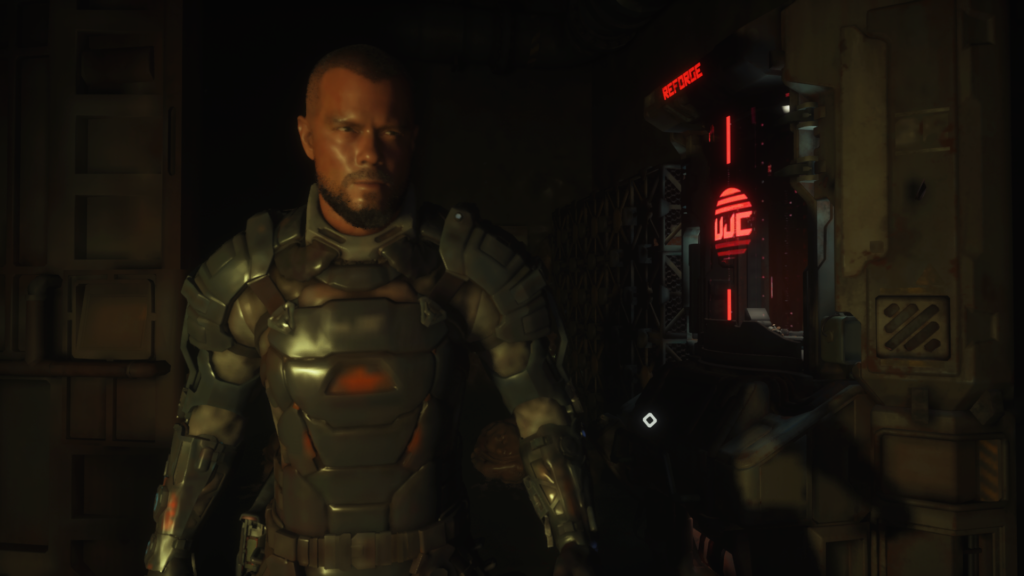
Even stranger, the game would immediately lose many of its textures and muddy itself up with almost PlayStation 2 graphics to resolve the framerate issue. Eventually, the graphics would restore back to their original state, but for that maybe 15 minutes after a huge framerate skip, you could expect to look at muddy, unpolished imagery for a while.
In all fairness, however, while technical bugs like this are frustrating, this was a very rare occurrence. At least on my end, I only encountered this glitch a few times during my entire playthrough. So, that’s really going to be your call whether you feel like the framerate and texture glitch is a dealbreaker.
I do belong here.
In this section of the review, I’m going to dive into The Callisto Protocol’s ending. Therefore, if you would like to avoid spoilers, feel free to skip the conclusions section.
*Spoiler Warning*
Although The Callisto Protocol begins merely as a tale of escape and survival, the story shifts towards one of discovery and uncovering the dark secrets behind the Biophage and the group who orchestrated the outbreak. In addition to learning that Nakamura and her group The Outer Way are not terrorists, you also find out that the tragedy that happened on Europa was a test-run for the outbreak on Callisto.
Ultimately, you learn that the warden of Black Iron is part of an organization (similar to Dead Space’s Unitology cult) that orchestrated the Biophage outbreaks in hopes of unlocking the key to human evolution. In fact, Black Iron itself was simply a front for human experimentation, with this last outbreak the final step. This leads directly into the game’s final boss… Captain Ferris.

See, unlike the other Biophage that act like mindless zombies, when Ferris got infected, he retained his consciousness. As a result, the warden selected Ferris as his “Alpha” subject and puts him one-on-one against Lee in the final experiment to see who is stronger.
After knocking Ferris around for a little bit, however, he begins his own mutation. The remainder of the boss fight sees you facing off against the hulking beast who can one-hit kill you if you get too close. To make things even more difficult, the game also throws a bunch of exploding enemies at you that you have to launch away with your GRP, while still avoiding Ferris.
This final fight against Ferris makes the earlier encounters with Two Head look like a walk in the park. It took me an hour and a half to finally beat the bullet-spongey brute. Once again, the difficulty here isn’t skill-based; it stems from cheap exploits to make things hard for the sake of being hard.
Concluding thoughts on The Callisto Protocol

Overall, The Callisto Protocol is a mixed bag with both good and bad elements. Where the game starts off with a bang through its surreal visuals, heavy-hitting combat and satisfying combos, the title’s enjoyment wains as you make it further in the story. From the occasional performance bug to the swarms of enemies that break the, otherwise good, combat mechanics, you’ll find yourself happy with its short runtime.
Though you may find some enjoyment with the strategical stealth section, the bombardment of enemies that charge you during repeat boss fights against the two-headed bullet sponge will leave you with nightmares for all the wrong reasons. Ultimately, The Callisto Protocol is far from a bad game, but it’s also lightyears away from being a good game either. Instead, it sits somewhere in the middle, floating through space and orbiting much the far superior horror games that inspired it.
The Callisto Protocol is available now on PlayStation 5, PlayStation 4, Xbox Series X/S, Xbox One and PC.
VERDICT
AVERAGE
AVERAGE
The Callisto Protocol starts off very strong with an in-your-face combat system and brutally beautiful visuals. However, as the game progresses, enemy swarms make the close-quarters combat feel unbalanced, and unfair boss fights make the game a nightmare for all the wrong reasons.

